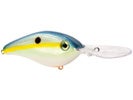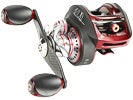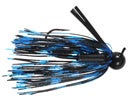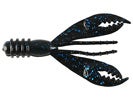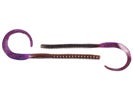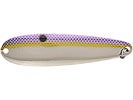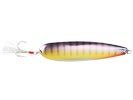Summer Ledge Fishing With Elite Series Pros
Ledges are open water reservoir structures targeted by Bassmaster Elite Series pros, particularly during the summer tournaments. These offshore structures often hold large numbers of lunker bass that can be caught with a variety of lures and presentations. Use these pro tips when probing ledges on your home waters.
Locating Ledges:
“A ledge is basically the old river bank in a reservoir,” says Elite Series pro Pete Ponds, of Mississippi. “If you look at a topo map of the lake, you’ll see the river channel and major tributary channels snaking throughout the system. The shallower areas immediately adjacent to these channels are ledges, and they’re major holding and feeding stations for bass.”
“The defining feature of a ledge is its rapid descent into deep water,” Ponds notes. “Many of the ledges we fish in competition are around 14 to 22 feet deep on top and drop off quickly to 60 feet or more when they hit the channel. Bass, often big schools of them, will move on and off these structures throughout the day, and if your timing is right, you can often load the boat quickly.” Ponds and other B.A.S.S. pros use sophisticated electronic units with side scan technology to pinpoint ledges. “But even a $99 graph will clearly show these structures,” he says. “They’re relatively easy to find – just idle your boat out away from the bank toward open water while watching your graph. When you see the bottom drop rapidly into a deep channel, you’ve found the edge of a ledge. Idle along that edge and drop several marker buoys near the dropoff as you follow the structure; the markers will to give you a visual casting target.”
“Ledges are often large structures, and bass aren’t everywhere on them,” says KVD. “They’ll stack up in key places along ledges that we call sweet spots. These might include isolated pieces of cover, like a big stump, a sunken tree or a rockpile, or some structural irregularity in the ledge, such as where it makes a sharp bend or indentation. Finding these sweet spots is what ledge fishing is really all about, because bass often gravitate to them from a wide area and in large numbers. If you can pinpoint these key places and figure out how to fish them correctly, you’ll have some of the most memorable bass fishing moments of your life, whether you’re casting for cash or fishing for fun.”
Lure Selection & Presentation:
Elite Series pros use several lures and presentations when probing ledges, including the following:
Deep-diving crankbaits: “Big diving plugs like Strike Kings’s 6XD are my No. 1 ledge lures during summer tournaments,” says Elite Series pro Kevin VanDam, of Michigan. “I usually fish them on a 7-foot medium action cranking rod with a 5.3 baitcasting reel and 14-pound fluorocarbon line.” VanDam positions his boat in deeper water, makes a long cast onto the ledge, then grinds the crankbait along the bottom of the structure, trying to “crash the lure” into bass-holding cover to provoke a reaction strike.
Football jigs: “These are big fish baits that are perfect for ledge fishing in hot or cold weather,” swears Mississippian and Elite Series pro Cliff Pace. “I’ll use either a 1/2- or 3/4-ounce V&M Living Image Football Jig with a craw trailer, depending on the depth of the ledge I’m fishing. I’ll make a long cast past my target, let the jig hit bottom, hold my rod at a 45 degree angle and use my reel handle to crawl it slowly along the bottom, like a live crawfish.”
Big worms: “In hot weather, a big (10- to 12-inch) plastic worm, like my signature Yum Big Show Paddle Worm, either Texas or Carolina rigged, is an awesome ledge lure,” says Floridian and Elite Series pro Terry Scroggins. “Cast it past fish-holding cover or structural irregularities and bump it slowly along the bottom. Worms are slower to fish than crankbaits but often work better when the bite is less active.”
Flutter spoons: “These metal spoons are big – often 5 inches long – and displace a lot of water, so they flutter to the bottom erratically, like a dying shad,” claims Elite Series pro Kelly Jordon. “I really like ’em on ledges because they’ll catch the bigger, lazier bass that are often holding under a school of smaller fish and are used to preying on injured baitfish.” The Texas pro fishes spoons on heavy baitcasting gear. “Cast to your target, let the spoon flutter down, then stroke it off the bottom with a sharp, upward sweep on your rod. As the spoon falls back down, lower your rod while reeling up slack line, then stroke it again. Most strikes occur as the spoon flutters back to the bottom, so watch your line and set the hook hard if you see it move.”
Pro Ledge Fishing Tactics June 2012 Bassmaster (Don Wirth pg. 68 – 69)


